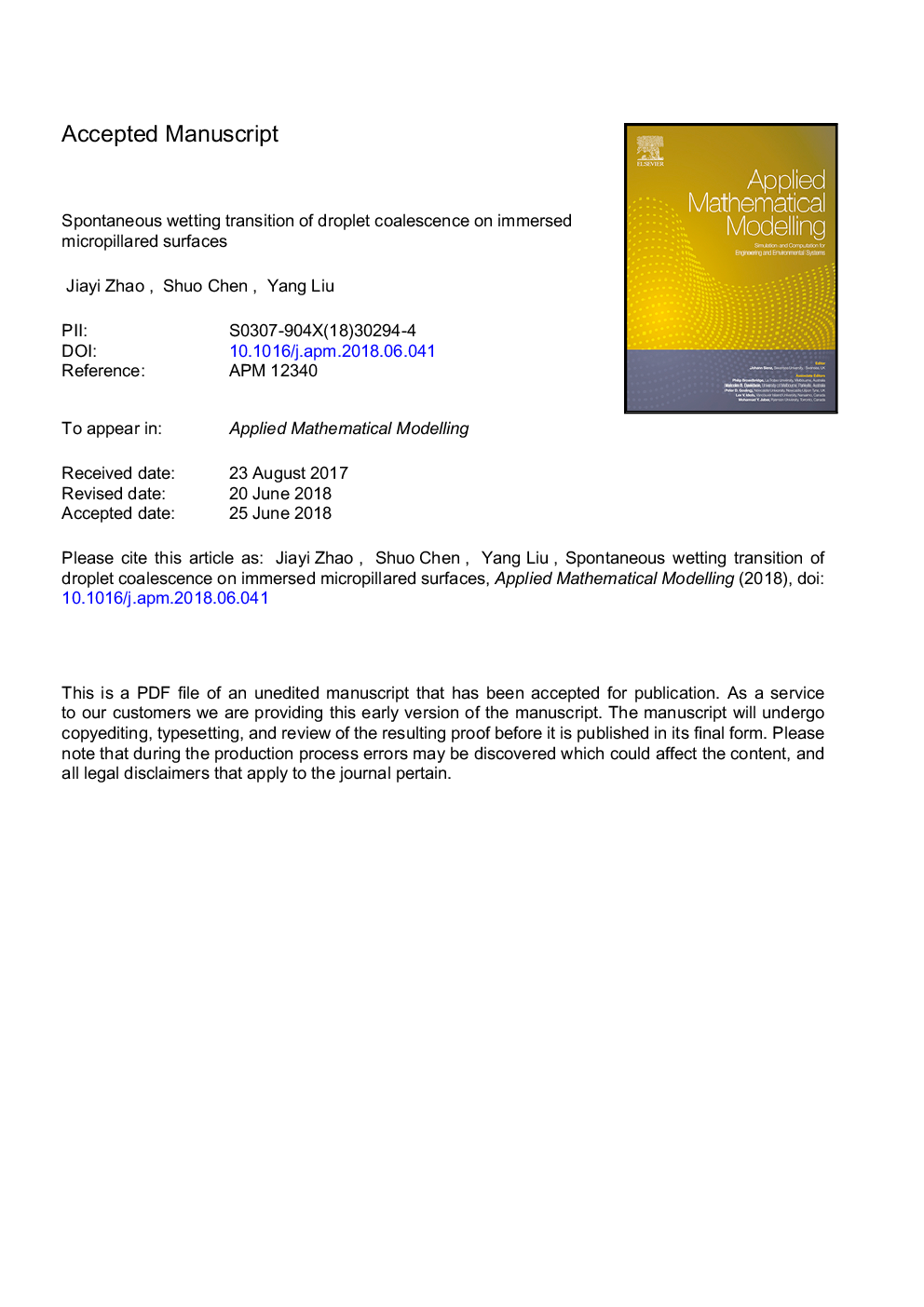| Article ID | Journal | Published Year | Pages | File Type |
|---|---|---|---|---|
| 8050889 | Applied Mathematical Modelling | 2018 | 24 Pages |
Abstract
The spontaneous wetting transition of droplet coalescence on immersed micropillared surfaces was investigated by using many-body dissipative particle dynamics (MDPD). The simulation results show that wetting states are influenced by both the interpillar spacing and intrinsic contact angle of surfaces during droplet coalescence. The overestimation of the contact angle by the Cassie equation was modified by introducing a penetration factor, and the energy analysis suggests that the spontaneous Wenzel-to-Cassie transition could be predicted from critical contact angles. For surfaces with small interpillar spacing and large intrinsic contact angle, the spontaneous Wenzel-to-Cassie transition occurs during droplet coalescence, irrespective of the size of the immersed area. The contact angle hysteresis was also studied, in which the droplet was driven on immersed micropillared surfaces. It was found that reducing interpillar spacing is a feasible option to maintain robust superhydrophobicity, and that it is possible to realize the spontaneous Wenzel-to-Cassie transition. Otherwise, larger interpillar spacing and larger size of the immersed region will result in longer contact lines pinned by pillars if the spontaneous Wenzel-to-Cassie transition fails to occur. Meanwhile, it leads to the weakening of droplet mobility during transportation. The outcomes demonstrate that appropriate geometrical structures and wettability properties should be taken into consideration in order to achieve robust superhydrophobicity and high efficiency of the droplet transportation.
Related Topics
Physical Sciences and Engineering
Engineering
Computational Mechanics
Authors
Zhao Jiayi, Chen Shuo, Liu Yang,
